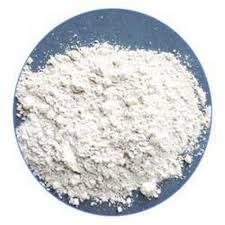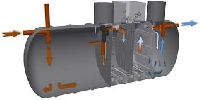
reactive silica
Silica in water is present mostly as reactive or dissolved silica. In surface waters, a small quantity of non-reactive silica (in colloidal dimensions) may also be present during some parts of the year, especially during the monsoon. As water passes through and over various soils into our lakes and rivers, the formation of carbon dioxide and organic acids resulting from microbial activity results in acid degradation of the silicate minerals (particularly clay particles). This acid attack on minerals will dissolve the iron, aluminum etc. and interaction of these components with silica results in the formation of colloidal silica that is stabilised with a coating of organic matter.
...more
Packaged Sewage Treatment Plant
Aerobic Treatment: T aerator bio-zone which is a combined fixed film reactor and active aeration system mounted on a horizontal shaft. The aerator provides a solid surface area for micro-organisms to attach themselves; these then feed on the organic matter present in the effluent. Rotation of the drums aerates the liquid. The bio-zone is self-cleansing and does not require extraneous pumping or sludge return. Final Settlement: The treated effluent then moves to the settlement area. This area contains a lamella parallel plate assembly for settling finer particles. The submersible pump removes sludge to the sludge storage compartment on a regular timed basis.
...more
Multigrade Filters
Multigrade filter is a depth filter that makes use of coarse and fine media mixed together in a fixed proportion. This arrangement produces a filter bed with adequate pore dimensions for retaining both large and small suspended particles. This filter performs at a substantially higher specific flow rate than conventional filters. Specific flow rates of 0.82 – 1.64 ftmin have been successfully obtained for treating waters containing 25 – 50 ppm suspended solids respectively to produce filtrate with less than 5 ppm.
...more
Lamella Clarifier
The INDION lamella clarifier provides an effective answer for the clarification of water and waste water. The lamella clarifier achieves solid-liquid separation by directing the liquid between a series of inclined plates called lamella. The settling surface of each plate is equivalent to its horizontal projection. Lamellae are normally spaced approx. 50 mm apart, with the result that large settling surfaces are concentrated within a relatively small floor area.
...more
environment management

Water Treatment Plants
Be first to Rate
Rate ThisOpening Hours